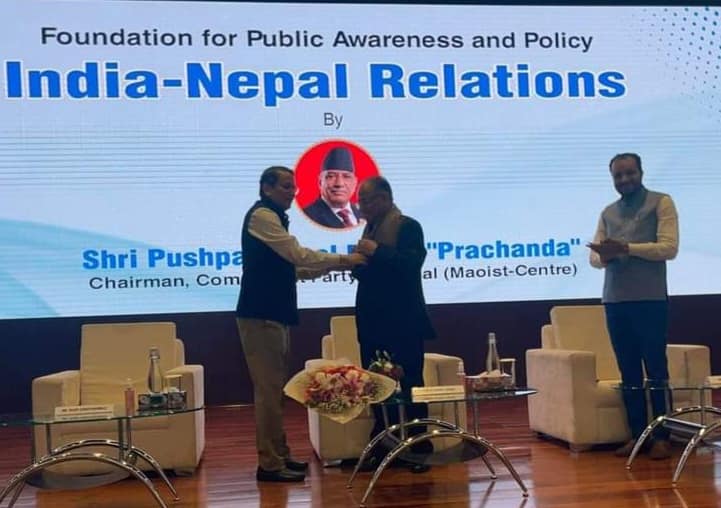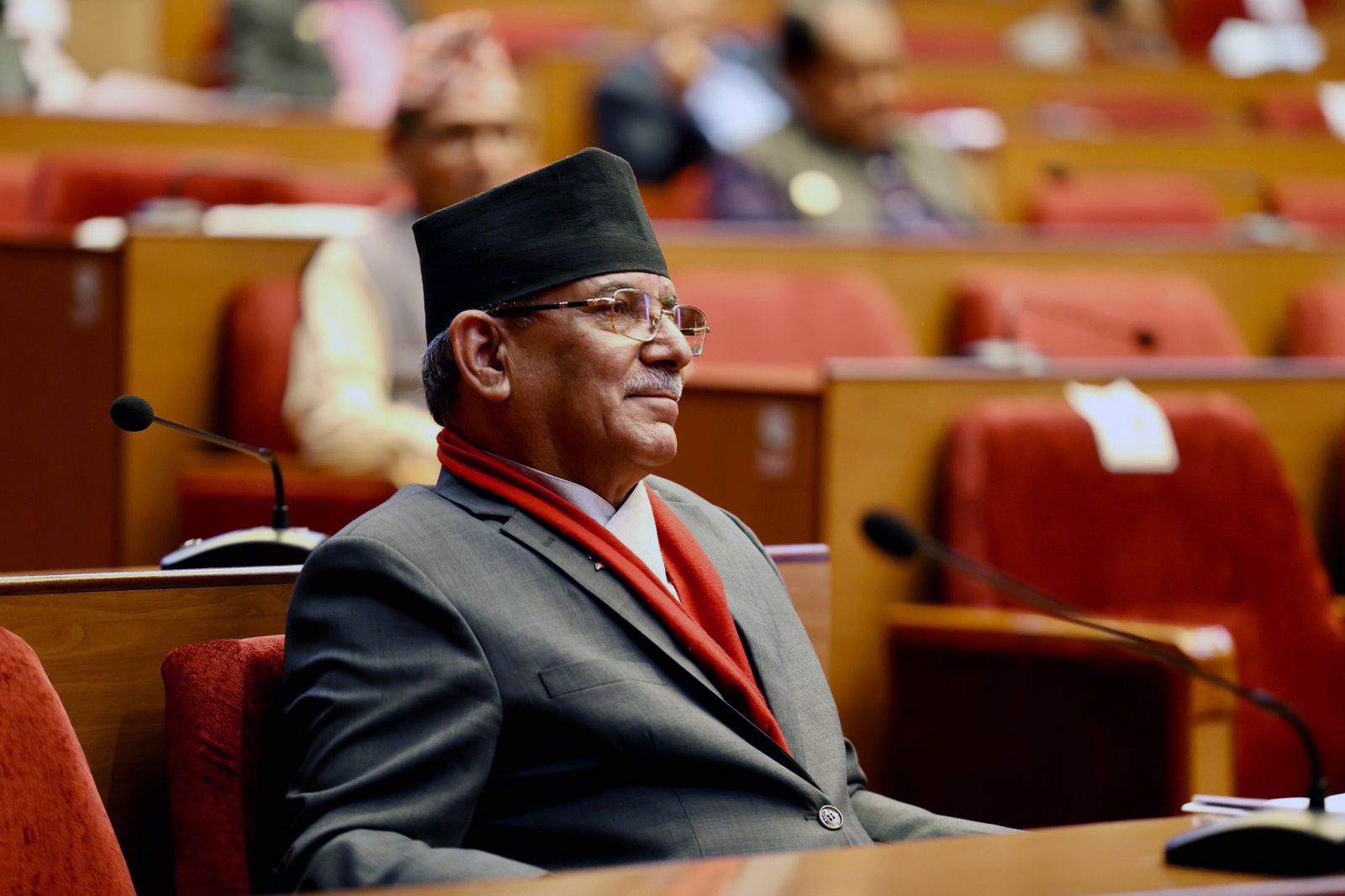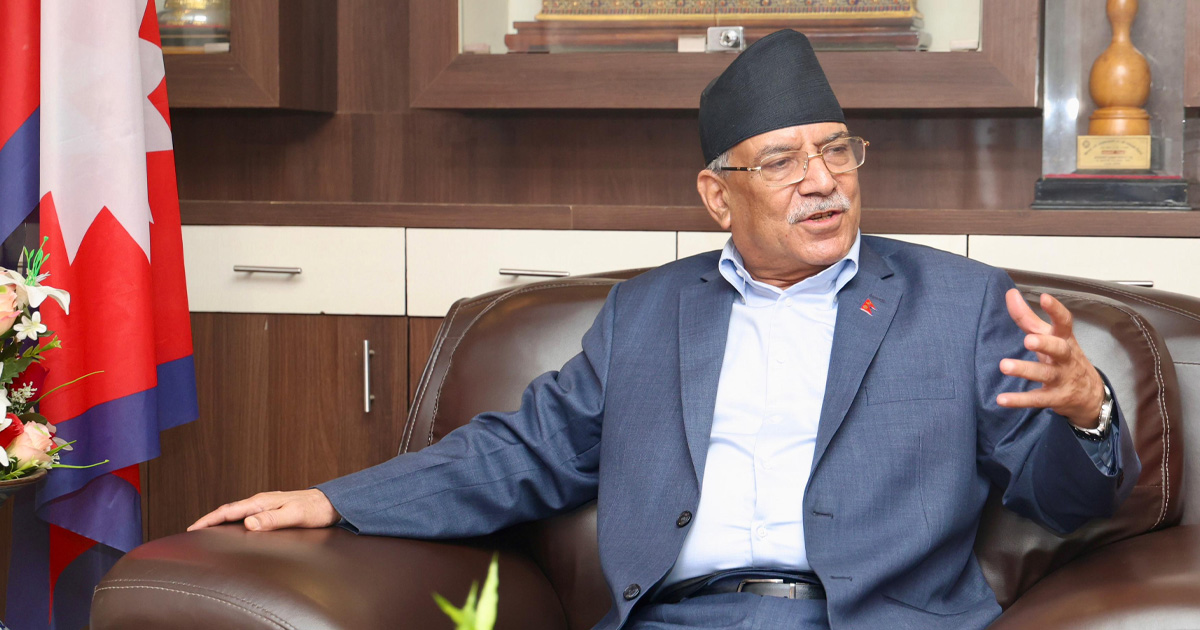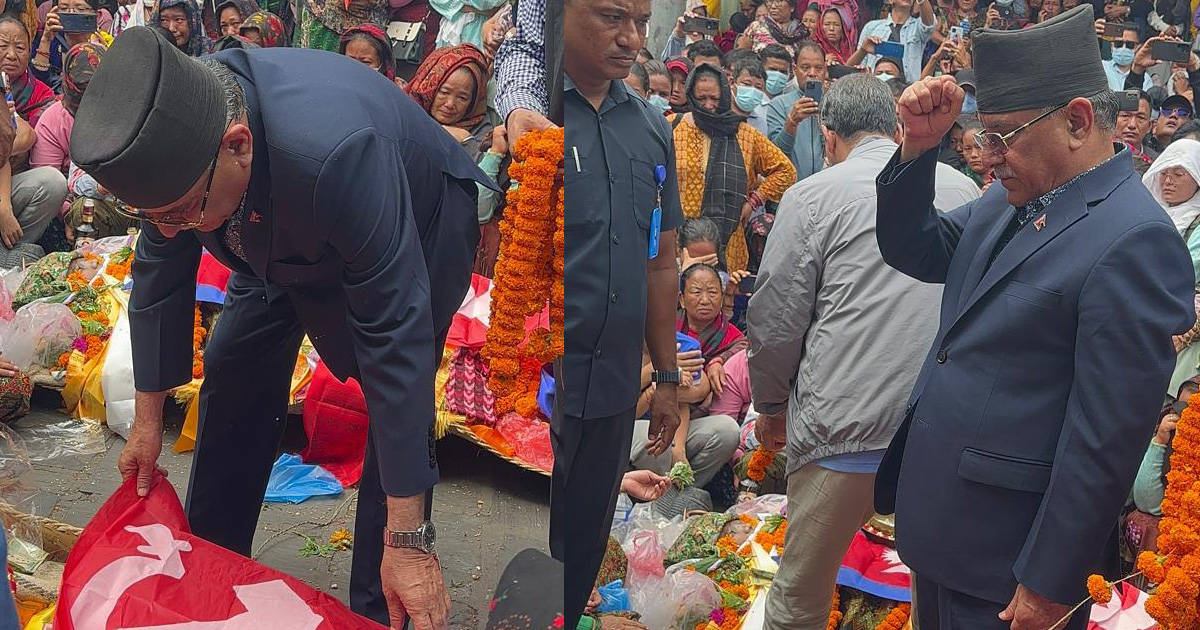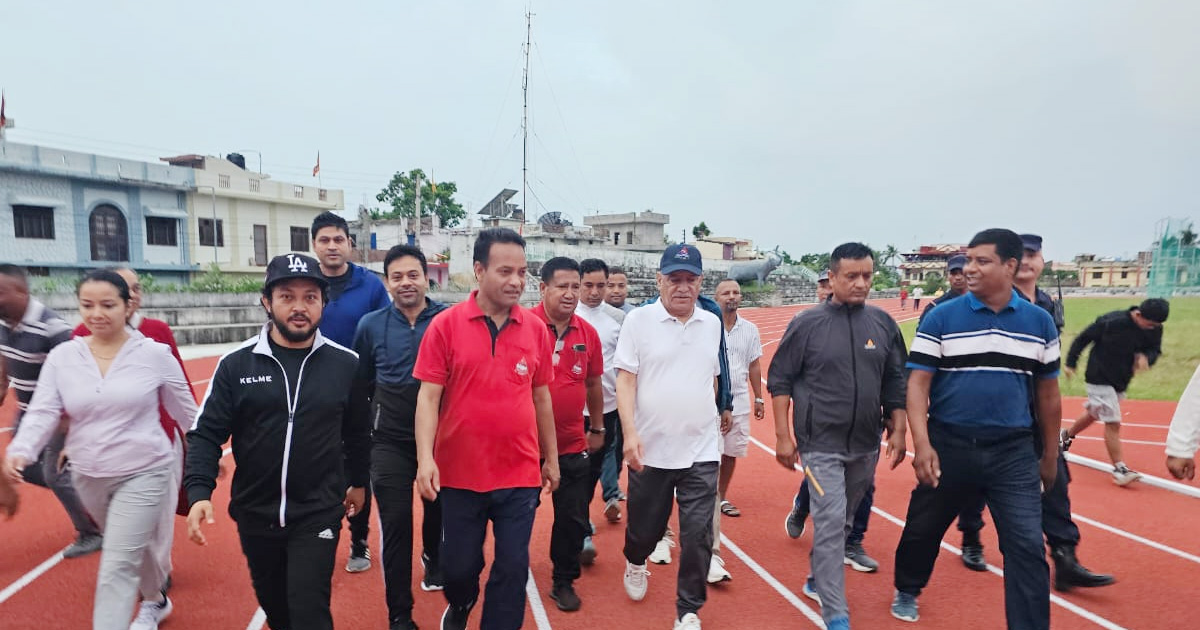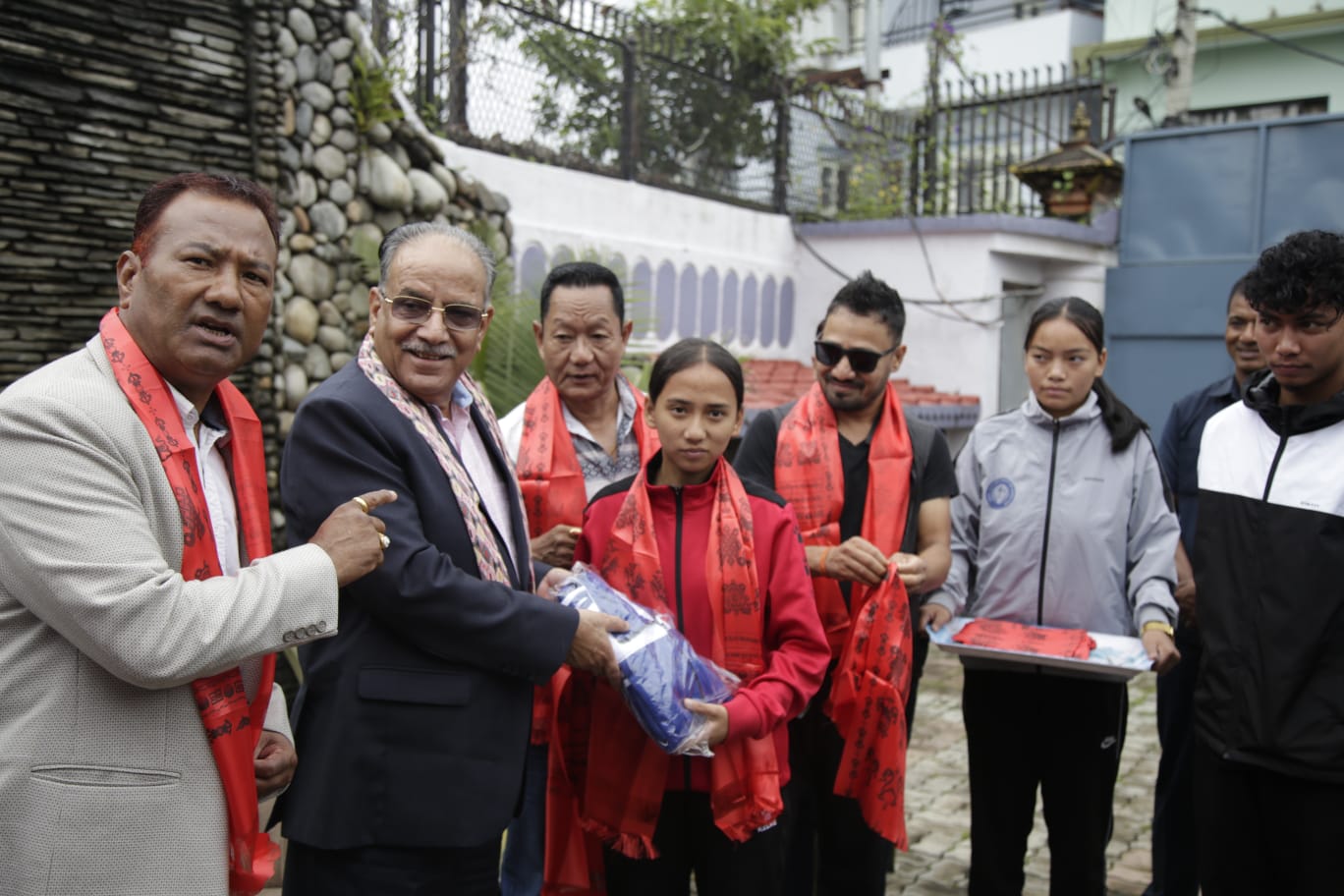There are some issues left by history that need to be addressed in good faith to fully realize full potentials of Nepal-India relations and cooperation. The matters related to 1950 Treaty, boundary and EPG report need to be resolved through diplomatic efforts and dialogue. In the spirit of good neighbourliness, we can make our relations problem-free.
President of the Indian Council of World Affairs,
Excellencies,
Government officials,
Academia,
Friends from media,
Ladies and Gentlemen,
I feel privileged to address this august gathering of intellectuals, distinguished luminaries, and friends of Nepal.
I express my sincere gratitude to the Indian Council for World Affairs (ICWA) for organising this event. I commend the works that ICWA has done in advancing the knowledge and facilitating discourse on important issues of world affairs.
Nepal-India relations are founded on the age-old connections of history, socio-cultural traditions and people-to-people contacts.
Our two countries have an immemorial history of harmonious co-existence. Our relations are rooted in antiquity.
The relations are deep and diverse, underpinned by mutual respect, cordiality and friendship.
We are connected by geography as well as history, by languages as well as literature, by our religions as well as rivers. Not just the history but also destiny has bound us together.
As friendly neighbours, our two countries have been aware of each other’s concerns and sensitivities. Nepal has not allowed its land to be used against the interests of our neighbors and it expects similar assurance from India.
Mutual trust and respect for each other’s sensitivities have helped to overcome some misunderstandings in the past.
Beyond the formal relations involving two governments, our relations are multifaceted. People-to-people contacts, open border, and immense good-will are unique strengths of our relations.
Our interactions today encompass wide span and scope – from culture to commerce, from transportation to tourism, and from education to energy.
Exchange of high-level visits and frequent interactions have further strengthened the age-old, time-tested and multidimensional ties between our two countries.
I fondly recall my visit to India in 2008 and 2016 as Prime Minster of Nepal and also in other capacity on several other occasions. I was deeply moved by the generous hospitality and warmth every time I visited this great country. I endeavoured to enrich the substance and widen the scope of cooperation with India during my tenure. My commitment has always remained strong to strengthen friendship and cooperation with our friendly neighbour. There have been two high-level visits between our two countries in a matter of less than two months.
The present coalition Government of Nepal headed by Prime Minister Deuba has attached great importance to its relations with India. We, as coalition partners, are of the view that our two countries should work together to fully harness the development potentials in order to uplift the living standard of our peoples who deserve a dignified life.
The official visit of Prime Minister Deuba to India in April, and subsequent official visit of Prime Minister of India Shri Narendra Modi to Lumbini on May 16 have generated a new momentum in our relations. These exchanges have added new dynamism in our relations.
In his address in Lumbini on the occasion of Buddha Jayanti celebration on 16th of May, Prime Minister of India Shri Narendra Modi highlighted that the friendship between the peoples of Nepal and India are unshakeable like the Himalayas.
As we mark this year the 75th anniversary of formalization of the bilateral relations between Nepal and India, this new dynamism speaks of huge potentials to take our relations to newer heights.
From this juncture, we can confidently look forward to the next 75 years and beyond for ever stronger and greater cooperation in several sectors –including tourism, culture, commerce and connectivity.
Ladies and Gentlemen,
Nepal and India are endowed with resources, both natural and human.
This abundance of resources needs to be transformed into the opulence of wealth.
For Nepal, India remains the most important trade partner. It is the largest source of Nepal’s imports as well as largest destination of Nepal’s exports.
The volume of our bilateral trade has been increasing. However, Nepal’s trade deficit with India continues to widen at an alarming rate for the size of our economy.
Given this scenario, it is imperative to fully realize Nepal’s export potentials. The business community and investors can explore opportunities in Nepal’s export potentials and contribute to addressing the perennial issue of trade deficit.
Further, more favourable market access and trade facilitation are needed to fully realize Nepal’s export potentials.
As Nepal is set to graduate from LDC category by 2026, we count on full potential of trade based on productive sectors as an engine of sustainable development.
Over the past two years, the COVID-19 pandemic has caused massive economic and social disruptions, impacting the lives and livelihoods globally.
At the hour of crisis, India has continued its support to Nepal including by unhindered supply of goods, medical supplies and much needed vaccines. We are thankful to the Government and people of India for the generous assistance extended to Nepal during difficult times, including in the aftermath of the devastating earthquakes in 2015. The response from the Government of India in the wake of earthquakes was swift, spontaneous and substantial. We greatly value India’s support in post-earthquakes reconstruction.
Ladies and Gentlemen,
We greatly value India’s longstanding cooperation in Nepal’s development pursuits.
Cross border-connectivity is an important agenda. It brings the economies closer; promotes bilateral trade; and facilitates people to people contacts. It also has a multiplier effect in the economy.
To enhance trade and economic activities, Nepal has prioritized connectivity infrastructures –including roads, railways, waterways and transmission lines.
Agriculture offers huge potential for cooperation. We need to implement the important understanding reached in the past for promoting cooperation in this sector. We admire India’s valuable support in supplying chemical fertilizers to Nepal.
Nepal and India are working for greater cooperation in different large projects including Integrated Check Post (ICP) and Rail links.
Railway link with India is being scaled up. Passenger services in Janyanagar-Kurtha railway have resumed, connecting Nepal with Indian railway network. We are expecting India’s favourable response to our request for additional air entry points as we expand the network of international/regional airports in Nepal.
Additional projects are in pipeline. While there is enough room for up-gradation, lack of infrastructure is no more a constraining factor in scaling up our commerce, connectivity and cooperation.
As a home of natural heritage and religious sites, Nepal fondly welcomes Indian tourists. Be it for nature, culture and adventure, we expect the flow of Indian visitors to increase in the days to come.
Ramayan Circuit, Buddhist Circuit and other religious sites including Pashupatinath, Muktinath, Janakpur solidly represent our civilizational bonds and potentials for scaling up religious tourism.
Ladies and Gentlemen,
While the world is grappling with the climate change, cooperation between Nepal and India at bilateral as well as global level has a huge potential. As a mountainous country with rich biodiversity and mighty Himalayas, Nepal’s ecosystems are also global goods.
Unfortunately, climate change has disproportionately impacted Nepal, not only thawing the vast ice-reserves in high mountains but also impacting the millions of people living downstream.
Nepal holds an immense potential in hydropower generation. As an economic powerhouse, India has a growing demand for energy.
Bilateral cooperation in power sector will therefore deliver mutual gains. Nepal’s hydropower is an answer to issues of energy security as well as green growth.
Nepal-India Joint Vision Statement on Power Sector Cooperation was issued during the visit of the Prime Minister of Nepal to India on 2 April 2022
Based on it, a long-term approach in joint development of hydropower and seamless power trade will unleash further economic potentials between Nepal and India.
Cross-border transmission infrastructure is being strengthened with new and upgraded transmissions lines. The potential for power trading between two countries is ever growing.
The quantum of hydropower export from Nepal to India has increased to 364 Megawatts, and we look forward to bolstering this export in a long-term basis.
Based on the Joint Vision, we can further explore power trading in regional basis including under BBIN framework.
Nepal is eager to welcome more investment from Indian investors and private sectors in hydropower.
In addition, we have prioritized some of the most potential sectors for investment such as agriculture, infrastructure, connectivity, tourism, MSMEs, export-oriented industries, which can help in economic recovery and pave the way for take-off.
India today has emerged as a major economy. The achievements made by India in economic, social, scientific and other frontiers in recent years have been remarkable. India’s development has been truly spectacular and inspiring.
The people of Nepal stood by India during its struggle for independence. Nepal had provided moral as well as material support. Today, they are standing by the people of India in their quest for development.
India’s Policy of the neighbourhood first and Sabka Sath Sabka Bikas can provide momentum to both Regional and Sub-Regional processes in South Asia — particularly in the areas of trade, transit, connectivity and hydropower.
We are also happy to see India’s lead in several multilateral initiatives including International Solar Alliance, Coalition for Disaster Resilient Infrastructure, and WHO Global Centre for Traditional Medicines. Also, India has driven the agenda of G20 and BRICS.
In many international fora including the United Nations, our countries have worked closely together. We share collaborative platforms in various regional and sub-regional forums.
Ladies and Gentlemen,
There are some issues left by history that need to be addressed in good faith to fully realize full potentials of Nepal-India relations and cooperation. The matters related to 1950 Treaty, boundary and EPG report need to be resolved through diplomatic efforts and dialogue. In the spirit of good neighbourliness, we can make our relations problem-free.
The commonalities between Nepal and India and extent of engagements have created a synergy for a robust interdependence. We must capitalize on these enablers to ensure that the cooperation bears fruits for people of both countries. Goodwill, trust, understanding, equality, mutual respect and benefit should continue to underpin our relationship.
Before I conclude, I express my sincere thanks once again to the Indian Council of World Affairs for organising this event. I reiterate my unflinching hope for closer and mutually rewarding relations between our two countries in the days to come.
Thank You!
(Remarks by Former Prime Minister of Nepal and the Chairman of Communist Party of Nepal (Maoist Centre), Hon. Pushpa Kamal Dahal ‘Prachanda’ at the Indian Council of World Affairs on the theme “Nepal-India Relations: Prospects for Deepening Friendship and Cooperation” – 16 July, 2022)
 क. प्रचण्ड
क. प्रचण्ड
